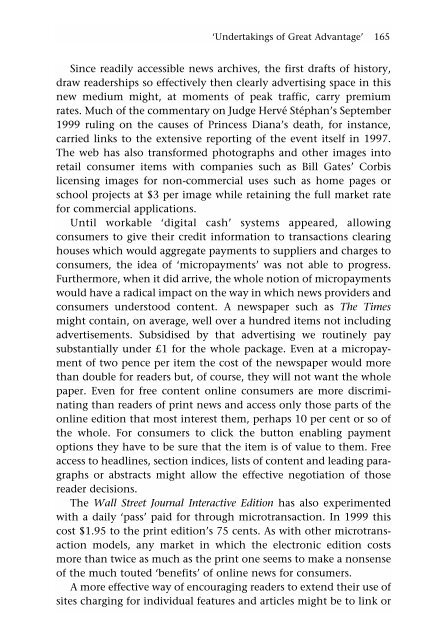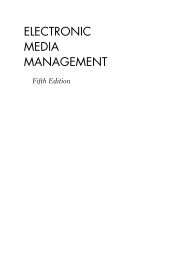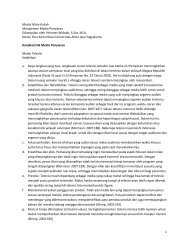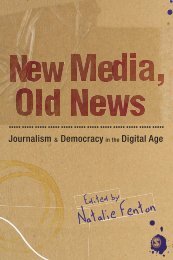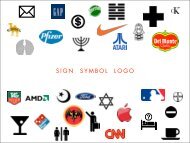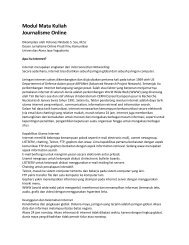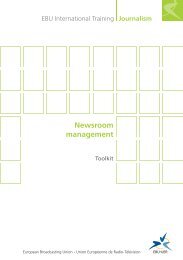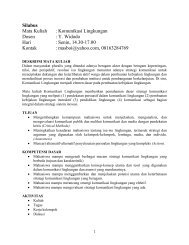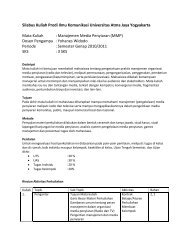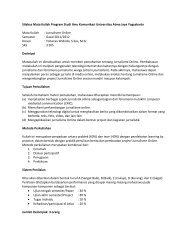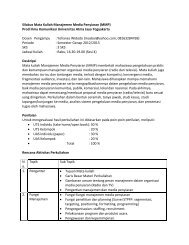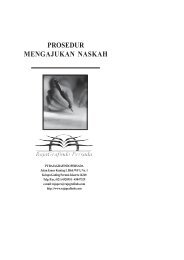Online Journalism - Ayo Menulis FISIP UAJY
Online Journalism - Ayo Menulis FISIP UAJY
Online Journalism - Ayo Menulis FISIP UAJY
You also want an ePaper? Increase the reach of your titles
YUMPU automatically turns print PDFs into web optimized ePapers that Google loves.
‘Undertakings of Great Advantage’ 165<br />
Since readily accessible news archives, the first drafts of history,<br />
draw readerships so effectively then clearly advertising space in this<br />
new medium might, at moments of peak traffic, carry premium<br />
rates. Much of the commentary on Judge Hervé Stéphan’s September<br />
1999 ruling on the causes of Princess Diana’s death, for instance,<br />
carried links to the extensive reporting of the event itself in 1997.<br />
The web has also transformed photographs and other images into<br />
retail consumer items with companies such as Bill Gates’ Corbis<br />
licensing images for non-commercial uses such as home pages or<br />
school projects at $3 per image while retaining the full market rate<br />
for commercial applications.<br />
Until workable ‘digital cash’ systems appeared, allowing<br />
consumers to give their credit information to transactions clearing<br />
houses which would aggregate payments to suppliers and charges to<br />
consumers, the idea of ‘micropayments’ was not able to progress.<br />
Furthermore, when it did arrive, the whole notion of micropayments<br />
would have a radical impact on the way in which news providers and<br />
consumers understood content. A newspaper such as The Times<br />
might contain, on average, well over a hundred items not including<br />
advertisements. Subsidised by that advertising we routinely pay<br />
substantially under £1 for the whole package. Even at a micropayment<br />
of two pence per item the cost of the newspaper would more<br />
than double for readers but, of course, they will not want the whole<br />
paper. Even for free content online consumers are more discriminating<br />
than readers of print news and access only those parts of the<br />
online edition that most interest them, perhaps 10 per cent or so of<br />
the whole. For consumers to click the button enabling payment<br />
options they have to be sure that the item is of value to them. Free<br />
access to headlines, section indices, lists of content and leading paragraphs<br />
or abstracts might allow the effective negotiation of those<br />
reader decisions.<br />
The Wall Street Journal Interactive Edition has also experimented<br />
with a daily ‘pass’ paid for through microtransaction. In 1999 this<br />
cost $1.95 to the print edition’s 75 cents. As with other microtransaction<br />
models, any market in which the electronic edition costs<br />
more than twice as much as the print one seems to make a nonsense<br />
of the much touted ‘benefits’ of online news for consumers.<br />
A more effective way of encouraging readers to extend their use of<br />
sites charging for individual features and articles might be to link or


